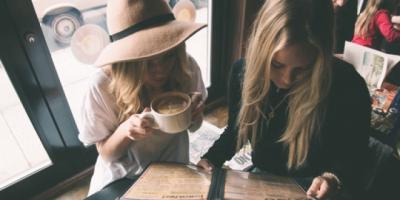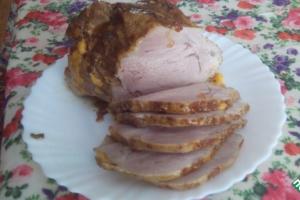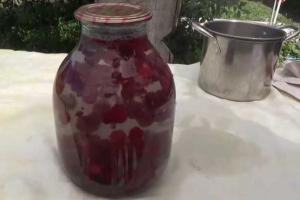To make a puzzle based on a drawn picture you will need:
- scissors;
- paper;
- glue;
- ruler;
- pencils;
- thick cardboard.
Draw any picture on a piece of paper. Also, don’t forget to make a photocopy - you can use it as a hint when making a mosaic.
Glue the picture onto thick cardboard and then leave it to dry completely. Then flip the image front side down.
Using a ruler, draw a grid, which should consist of shapes of various sizes. Using a utility knife or scissors, cut out the puzzle along the lines.
Your puzzle game is ready. Mix the mosaic pieces and enjoy assembling them.
How to make a puzzle based on a photo
There are also more complex ways of making a homemade puzzle, which can serve, for example, as an original gift for a friend. To do this you will need:
- a color printer that can high quality photo A4 format;
- thick cardboard that will fit the size of your printed photo;
- PVA glue;
- scissors;
- pencil.
If you want to make a fairly large puzzle, you should contact special studios that print large-format photographs for photo printing.
So, stick the printed photo to the cardboard and wait until your product dries completely. Then trim the excess cardboard so that the edges of the photo exactly match the edges of the cardboard and have the same shape.
After that on back side cardboard using a regular pencil, apply markings according to which you will need to cut out the puzzle pieces. If you are making a puzzle for adults, try to make the puzzle pieces more complex rather than simple geometric shapes. Use not only straight lines, but also semicircles and geometric figures under different angles. This way you will make the process of assembling a homemade puzzle as difficult as possible.
Printing houses have special machines that will allow you to cut your photo different ways. This option may come in handy if you are in a hurry with a gift or are too lazy to use scissors, but original gift I still want to give it as a gift. When the puzzle pieces are cut, try to assemble them into the original picture yourself. At the same time, make sure that they fit well enough to each other.
How to make a puzzle for a baby
To make a soft puzzle for a small child, you will need:
- several sheets of multi-colored porous rubber;
- scissors;
- household cellulose napkins.
Cut out any figures that are familiar to the child from sheets of rubber and stick them on a cellulose napkin. After this, using scissors, cut the resulting figures into 2-3 parts.
For kids who have not yet fully acquired the skills of folding puzzles, it is best to cut the picture into 2 equal parts. After some time, when the baby can easily put together a picture, you can cut each piece of the puzzle game into 2 more parts.
Alternatively, to make a puzzle, you can use a bright page from an old illustrated magazine, paste it onto cardboard and cut it into squares, triangles or other geometric shapes. Even if you don’t have cardboard at hand, it doesn’t matter! Take advantage of the most in a simple way make a puzzle for a child - take an old and elastic postcard with color illustrations and cut it into pieces.
It is recommended that parents put puzzles in a bag or envelope so that they don’t have to look for them all over the room. In this way, you can create a variety of puzzles for your child, allowing him to develop fine motor skills and thinking.
Putting together a puzzle is very exciting activity, and it is interesting not only for children, but also for adults. In addition, collecting pictures is quite a useful activity. Puzzles develop thinking, memory and attention. This kind of entertainment is popular in all countries, but not many people think about the fact that you can make an interesting puzzle yourself. Even a child can make a game - it’s not difficult at all. Of course, the quality will be different from the store, but you won’t waste money.
What materials will you need
To make a puzzle, use Photoshop, take cardboard, you must have a printer, paper for printing and scissors.
Making a puzzle
Open Photoshop and load your favorite photo. In the program we make a copy of the Background, that is, the working layer. Give the file a name. Between the resulting layers, make another layer and also give it a name.
Fill the new layer with black, go to the topmost working layer and start drawing the puzzle. Open the Texturizer panel and select the line called Texture. A dialog box should open where you will need to load the texture of the working layer by clicking on the “Load Texture” button. Now you need to configure the options. We determine the relief of the puzzle pieces and select the desired size.
After setting up the textures, click on the well-known “OK” button and see that a texture has formed in the photo.
Now we proceed to printing the resulting image with a visible texture; we paste the printed sheet onto a cardboard sheet. Take the cardboard as tightly as possible so that the parts do not break or bend. Use high quality glue. The image should stick tightly to the cardboard and not peel off. After you have glued the sheet and tightly fastened it to the cardboard, place an even heavy weight on it, for example, a brick.
When the image is completely dry, check the adhesion. If everything is in order, you can start cutting out the parts. Take the sharpest and most comfortable scissors. The main rule in cutting is accuracy and clarity. You need to cut the pieces strictly along the lines, otherwise the puzzle will not stick together well. An entertaining game is ready.

Puzzles for kids
If your kid loves to put together pictures, then you can please him and make interesting puzzles with your own hands and you won’t have to spend a lot.
All you need is: colored sheets of foam rubber and household cellulose napkins.
From sheets of rubber we cut out any figures that might attract the baby and glue them onto a napkin. Take scissors and cut the napkin into several pieces. Children's puzzles are ready. The variety of shapes will attract the baby’s attention, and such game puzzles will help him develop fine motor skills.

For the youngest players, it is better to cut the puzzles into two parts, and the pieces should be of a rather large size. When your child masters the technique of folding two pieces, you can complicate his task and make a puzzle with more pieces.
This game is great because in the evenings you can get together with the whole family and have fun. As you can see, it is not at all necessary to spend money on purchasing puzzles; you can make the game yourself very quickly and without difficulty.
I was asked to make a simple wooden puzzle, Piggy.
I usually draw a pattern on the computer and then print it on paper, easily changing the size of the image depending on the size of the workpiece. This time I found myself without a printer, so I drew it directly on a piece of birch board. The thickness of the workpiece is about 18 mm. For sawing with a hand jigsaw it's a lot, but for jigsaw machine(pictured) just right. Option homemade machine showed October in this thread

The next stage is drilling holes for the eyes. It is better to do this before sawing, since small parts easy to split with a drill.
Then sawing. I use German Flying Dutchman files. Files come in different shapes and thicknesses. I prefer FD-UR (ultra reverse) files. They are very sharp, maintain this sharpness well when working and give a clean cut, which often requires almost no further grinding. The exception is that when sawing along the fibers, rags remain, as in this photo on the belly of a piglet.
The thickness of the file may vary. I choose depending on the thickness of the parts and further finishing. It is better to saw thick workpieces with thick files, since with a small gap the parts are then difficult to disassemble and assemble.
Also, further painting and varnishing require thicker files, since the paint layer is also thick.

Upon completion of cutting, grind all parts. And my customer will do the painting.
All photos from the article
IN Lately This type of construction, such as puzzles made from sheets of plywood, is becoming increasingly popular, and they can be of both the classic type and in 3D design. A very big plus is the fact that the sets can be purchased at finished form, or you can make it yourself. Next, we will look at the simplest options where you can acquire initial skills, and tell you what you will need to carry out the work.

What do you need for work?
If you decide to take up such a hobby, then to do the work yourself, you will need the following:
| Plywood | This material is best suited for the manufacture of both 2D and 3D products. The thickness can vary, for example, for small structures sheets with a thickness of 4 to 8 mm are used. |
| Jigsaw | Many craftsmen prefer to use manual option, its price is low, which allows you to work with minimal costs. Stock up on a sufficient supply of canvases in advance, because if you don’t have a lot of practice, then at first you will break them quite often; they don’t cost much, which is also important. You can also purchase a stationary electric jigsaw; working with it is much more convenient and faster. |
| Copy paper | With its help, the design will be transferred to the surface of the plywood. It is very important that the marking is done efficiently and accurately, otherwise the elements may simply not fit together. To transfer an image from paper, use either a pen or a special scriber so as not to spoil the drawing and use it several times |
| File and sandpaper | In order for all the elements to fit together well, it is necessary to clean the edges using sanding paper, and recesses are easier and best processed using a small round needle file |
| Drilling equipment | In order for all connections to be as accurate as possible, it is necessary to drill holes at the end of the grooves, the diameter of which should be equal to the width of the section being cut. This way you can achieve maximum accuracy and avoid mistakes. |
Important!
In order for the work to proceed quickly and efficiently, you need to equip a table for, it will greatly simplify the process.
Shown below simplest option, which you can make yourself and either permanently attach to the table, or install it as needed, pressing it with a clamp.

Workflow Description
Let us note right away that the instructions for carrying out the work are not complicated, and if you master at least one product, then you will be able to do subsequent ones much faster. As experience is gained, the complexity of the designs will increase.
Preparation

This stage consists of the following activities:
- First of all, you need to select drawings of plywood puzzles; they can be found on specialized resources on the Internet, as well as in specialized literature. You shouldn't take too much to begin with. difficult option, since you will spend a lot of effort and time on its manufacture, it is much wiser to make the design simpler in order to gain experience;

- The picture can be printed as it is, or in an enlarged size, and the drawing is transferred from it to plywood. The instructions for carrying out the work are simple: copy paper is placed on the material, and the above diagram is placed on top; all the outlines of each element are carefully transferred by tracing them with a pen or a thin scriber. After removing the carbon paper, all lines are inspected and, if necessary, corrected with a sharpened pencil.
Main stage
The work is carried out in the following sequence:
- It is important that the desktop is located on comfortable height, a workpiece is placed on it, which is fixed with one hand, and the work is carried out with the second. Below is the diagram correct position at work;

- Cutting is done first along the outer contours. You should carefully cut along the line, trying to deviate from it as little as possible. You should not rush to avoid mistakes and spoil individual elements;
Important!
Do not forget to constantly monitor the position of the jigsaw so that the ends of the elements are perpendicular to the surface.
Often, inexperienced craftsmen make skewed cutting, which negatively affects the final result.
- Next, the connecting grooves are cut out; for this, first of all, a hole is drilled with a drill, the diameter of which must match the width of the cutout. Next, the entire section is cut out along the line, after which all distortions are corrected either with a sharp carpenter's knife or with a small needle file;

- The next step will be to process all the ends of the product using sandpaper; you need to slightly round them so that they do not scratch and look more attractive and neat. The work requires thoroughness and accuracy, so there is no need to rush;
Puzzles for kids are a very exciting educational game. When putting together puzzles, the child learns to analyze, compare, and combine parts into a whole. On our website we invite you to make your own puzzles for children. To do this, you do not need to spend a lot of time, effort and it will save a lot of money.
In this section we offer colorful puzzles for children 3, 4, 5 years old from 24 parts.

Colorful puzzles for children to print for free




Colorful puzzles for children to print for free
How to make puzzles with your own hands
To make puzzles with your own hands, you need to download the archive, select a file with puzzles, print it, glue it on cardboard, cover it with tape and cut the picture into small pieces along the lines.
If the child is good with scissors, then let him cut out the puzzles himself. Even if he doesn’t cut very smoothly, the picture will still turn out well.
If your baby loves to do appliqués, then you can invite him to glue the puzzle pieces onto a sheet of paper to make a whole picture. Then the sheet with the image does not need to be glued to the cardboard, but simply cut into small pieces and let the child glue them together.
The process of making puzzles for children with your own hands is shown in the photo. Good luck to you!

Print files with puzzles

Glue the sheets onto cardboard and cover with tape on top

Let's start cutting out the puzzle pieces

Colorful puzzles for children

Colorful puzzles for children

Colorful puzzles for children


Colorful puzzles for children

Colorful puzzles for children
As we prepare, we will post new developmental material, follow our publications.
The site also offers puzzles for children of all ages:
- For very young children
- Puzzles based on folk tales
- Large puzzles for children 2, 3, 4 years old
- For children 2, 3, 4, 5 years old, puzzles from








